Inspired by the long-delayed arrival of spring, I started a new project today—a small handquilted blanket. I thought I would share the project step-by-step. Maybe it will serve as a bit of inspiration for those of you that haven’t tried hand-quilting yet.
Step 1: Fabric choice. For this project, I wanted to use a single piece of fabric with an interesting pattern that I could quilt. This project from Last Minute Quilted and Patchwork Gifts was in my mind as I was looking at fabrics, but I didn’t find anything like that. Instead, I chose this fabric from Anna Griffin for Windham:
For the back, I found a very-faintly-striped light green that matches nicely. It’s from Just Wing It! by MoMo for Moda.
It’s important to note that both of these are quilter’s cotton. I don’t think I’ve ever used anything other than cotton for quilting, though you could experiment with that if you want to. For this project, I purchased 1 yard of each fabric.
Step 2: Wash your fabric. I was taught to always wash cotton before starting a project because it is likely to shrink. I find it best to simply wash the fabric as soon as it comes home with me. I use pinking shears on the non-selvedge edges to (try to) prevent a big tangle of strings on the edge of the fabric.
After a trip through the washer and drier, iron the fabric. If you pull it out of the drier when it’s still a tiny bit damp, you’ll get super-crisp fabric. If, however, you leave your fabric to dry completely then cool off in the drier while you go out to dinner, still do your best to get out as many wrinkles as you can, but don’t stress too much about it--mine was still pretty wrinkly.
Step 3: Make a sandwich. Start by laying the backing fabric on the floor, RIGHT SIDE DOWN. Next, take your batting (that’s the fluffy stuff that goes in the middle) and lay it on top of your backing. I’m using this cheap-o low-loft synthetic stuff I had in the closet. Different types of batting will give different results—you can study up on this before deciding what kind you want to use. Or just buy this cheap stuff; I think I got it from JoAnns. It’s definitely mediocre, but whatever.
Because my batting was in a larger roll, I had to trim it to the proper size. To do this, I lined up one corner a little bit outside of the backing fabric, so that the batting extends beyond the backing, then I trimmed around the other sides so it’s about ½-1 inch bigger all around than the backing.
After the batting is in place, position your front piece of fabric RIGHT SIDE UP. Since both of my fabric pieces are about the same size, I took care to make sure that the top piece lined up nicely over the bottom piece.
Just to summarize, you should have your backing piece FACE DOWN, then your batting, then your front piece FACE UP.
Step 4: Basting. Once your sandwich is carefully arranged, you want it to stay that way, right? So now you baste. For handquilting, I was taught to baste with all-purpose thread in long running stitches. When the quilting is done, you remove the basting stitches (with a great flourish of accomplishment as you marvel at all your handquilting).
To baste this quilt, I chose to use black thread, mostly because I have a lot of it. It will also be helpful to use a thread color that contrasts with the thread color you use for quilting, I think. I used a regular needle for my basting because this is the way I was taught, but I’ve seen other people using curved needles. Those remind me too much of fish hooks—I’ll stick to basic straight needles. Cut a long piece of thread—about a yard or so—and tie a big knot in one end. I do this by wrapping the thread twice around my right pointer finger, pushing with my thumb as I roll my finger down and then using my middle finger nail to tighten the knot. (Lookee! I found a video of how to do it.)
Starting from the center of the piece, work long running stitches out to one corner. Make sure that your stitches are catching all three layers of your quilt (but try not to sew your sandwich to the carpet). When you finish the first line, reknot your thread and start again from the center toward the opposite corner. Work from center to the other two corners.
Work basting stitches from center out to the middle of each edge. Continue adding lines radiating out from the center. I ended up working 16 wedges in each quadrant of the quilt. I was aiming to have no more than 3 inches between lines, but I just eye-balled it—no need to get out a ruler for this. I finished my basting by running a line around the perimeter.
Next time, I’ll talk about the actual quilting, so check back soon!

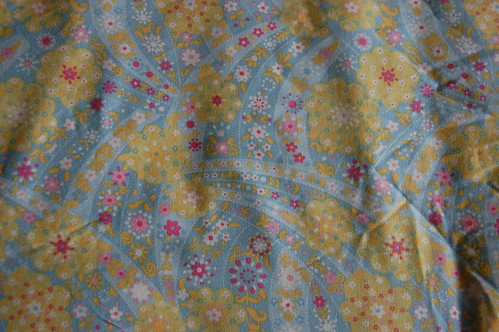

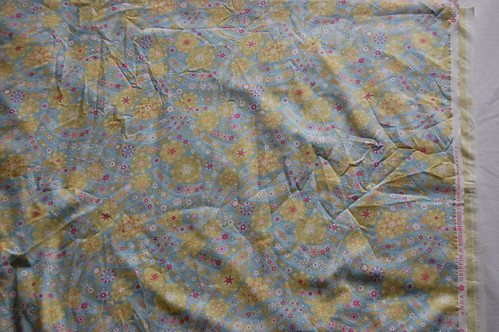
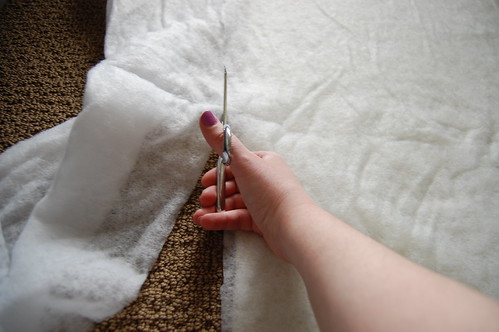
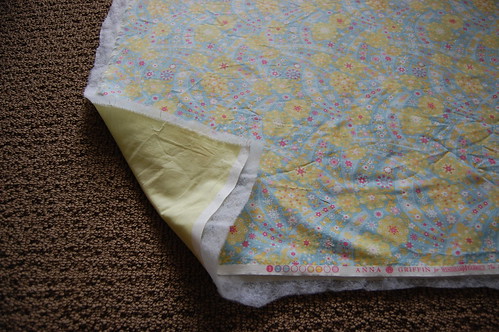
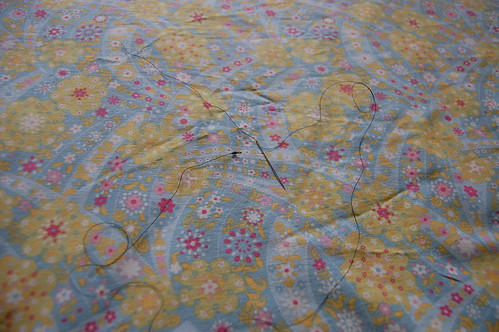
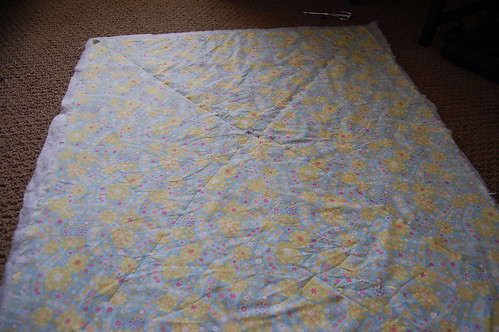
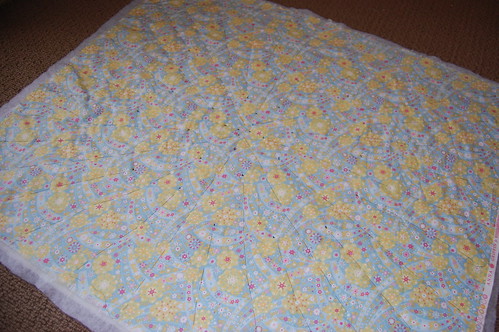
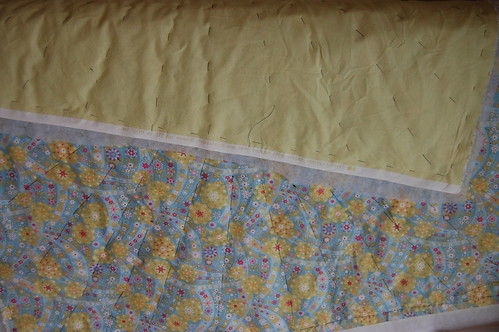
1 comment:
thank you this is very helpful for new quilters!
Post a Comment